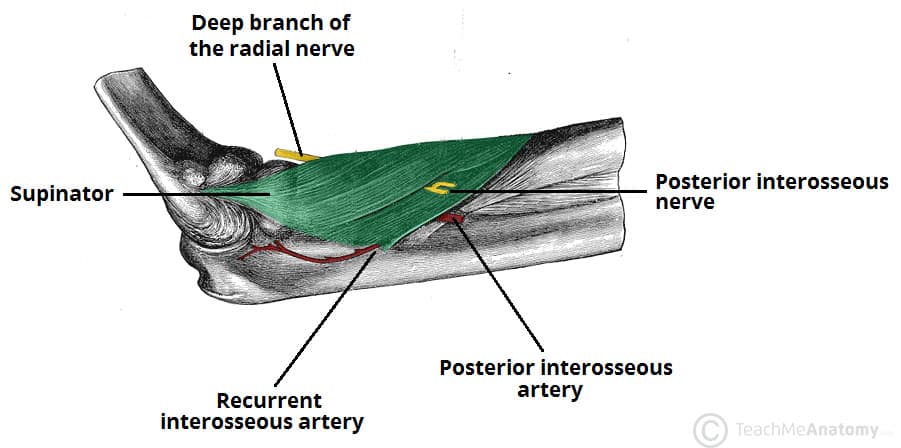The posterior interosseous nerve is a motor branch of the radial nerve that arises in the posterior forearm.
It supplies motor innervation to the majority of muscles in the posterior compartment of the forearm.
Course
The posterior interosseous nerve originates as a continuation of the deep branch of the radial nerve as it passes through the supinator muscle.
It then runs in a plane between the superficial and deep muscles in the posterior compartment of the forearm, supplying branches to these muscles.
When the posterior interosseous nerve reaches the wrist joint, it terminates by supplying sensory branches to the dorsal (posterior) joint capsule.

Fig 1 – The deep branch of the radial nerve pierces the supinator muscle, and is renamed the posterior interosseous nerve.
Sensory Functions
The posterior interosseous nerve supplies sensory fibres to the dorsal (posterior) wrist joint capsule.
It does not supply any cutaneous innervation.
Motor Functions
The posterior interosseous nerve supplies motor innervation to the majority of muscles in the posterior compartment of the forearm:
| Superficial Compartment | Deep Compartment |
|
|